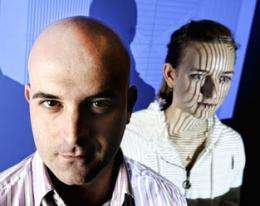Computer surveillance will help keep an eye on national security

Protecting community through intelligent surveillance technology is vital but current facial recognition systems make it difficult to identify people in unconstrained environments.
To address this problem, Queensland University of Technology researchers are developing smart technology that combines 2D and 3D video images taken from a variety of challenging environments and makes it possible to identify a person without the need to stand face on to a camera.
The project is supported by an Australian Research Council Discovery grant awarded to key researchers Professor Sridha Sridharan and Associate Professor Clinton Fookes from QUT's Science and Engineering Faculty.
Chief investigator Professor Fookes said there were a number of challenges to working in an unconstrained environment, where people were not necessarily aware their image was being captured.
"The idea is to identify people who are walking around naturally in a public space," Professor Fookes said.
"For example, they could be at major sporting events, concerts, in airports, train stations and so on.
"So we are often working with images that may have low lighting or shadows, where the face may not be clearly visible all of the time and where the resolution may be very small.
"What we are trying to do is use multiple cameras in space to reconstruct a face in 3D, or use multiple images over time of the same face to reconstruct into 3D."
Professor Fookes said the development of such a surveillance system would be of great benefit to law enforcement agencies, which were often hampered in their investigations by poor quality vision and images.
He said the focus of the research project would look at developing mathematical algorithms that make it possible to take features from video and convert that into a model capable of recognising and matching facial features.
"We want to get as much information from as many sources as we have available, so if that is 10 cameras then we will use information from 10 cameras," he said.
"Once we have the information, the system will then be able to identify a shortlist of possible candidates and it will then be up to a human observer to authenticate the correct match."
Professor Fookes said the project, which involved a joint collaboration with Professor Massimo Tistarelli from the University of Sassari in Italy and Dr Simon Lucey from the CSIRO, would provide a world-leading set of tools for facial analysis in visual surveillance and video content extraction applications.
Provided by Queensland University of Technology

















